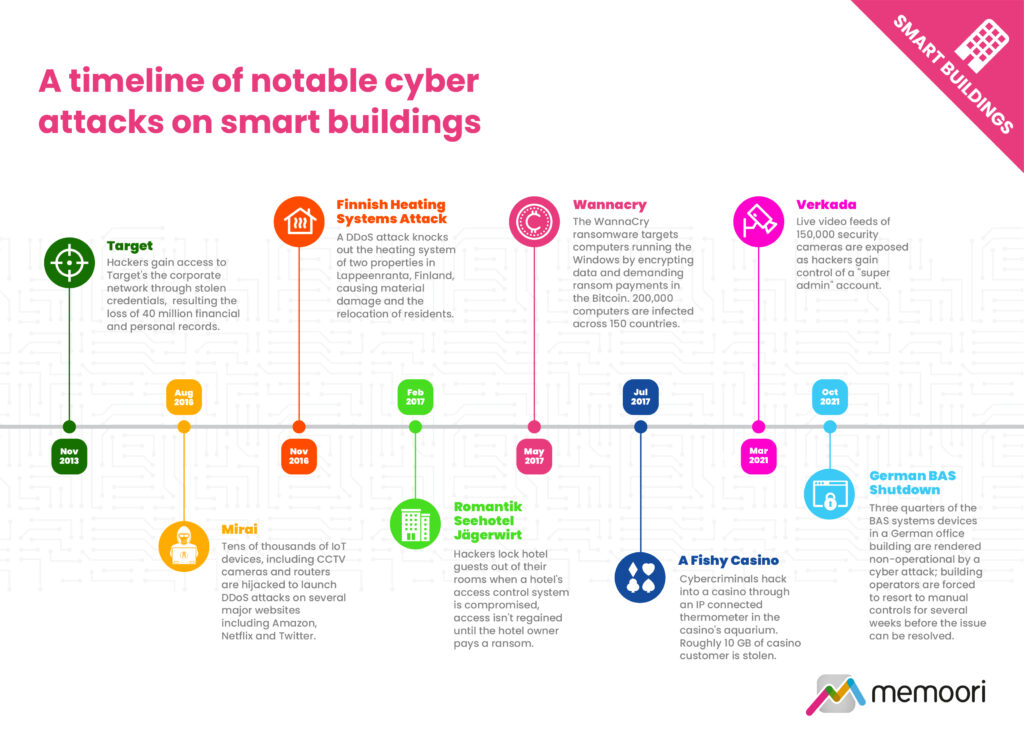As we continue to drive connected technology into buildings, we are experiencing a steady rise in the number of cyber attacks and a growing concern about the vulnerability of smart buildings. However, as much as 85% of all cyber crimes go unreported, according to the US Department of Justice (DOJ), meaning the scale of the problem is far greater than most people realize. Due to the lack of cyber security skills in buildings and low confidence in law enforcement to tackle individual cases, we are not getting the full story on cyber crime in smart buildings.
“These statistics indicate that many organizations are either unable or unwilling to effectively report on the scale of their cyber security problem. Information about the disclosed incidents can be limited since many of the affected organizations are unaware of how threat actors managed to get initial access,” reads our latest research. “Many observers also point to the rising incidence of successful ransomware attacks as a key reason why so many incidents go unreported. While the official advice for firms hit by ransomware attacks and other forms of cyber extortion is to report the incident rather than pay up, many organizations instead choose to pay the ransom.”
In an investigation of 623 ransomware incidents across the EU between May of 2021 and June of 2022, the European Union Agency for Cyber Security (ENISA) found that in 94.2% of incidents, it was never disclosed whether the company paid the ransom or not. Companies clearly remain understandably reticent to admit when they have been successfully extorted due to the reputational damage it might cause if the truth gets out. While operators of some critical infrastructure are now legally bound to report on cyber breaches of their systems, this nature does not typically extend to owners and operators of commercial buildings, leaving an uncertain cyber security landscape for many, if not most, smart buildings.
Given the current situation, we neither have substantial metrics to measure the extent of this problem nor an assessment of the efforts taken to counter it. the magnitude and costs of cyber crime, and what we are seeing reported on and discussed in the media may well be the tip of the iceberg,” explains the new research report. “Without more accurate metrics on the scale and volume of successful attacks, law enforcement actions taken against cyber criminals, and the impact these actions have on combating the threat, it will continue to be difficult for policymakers to make decisions about needed policy changes in order to assess the adequacy of current public policy approaches.”

“The regulatory push to improve cyber breach notification laws is gathering steam in several countries. These regulations compel organizations affected by a data breach, to notify their customers and other parties about the breach, as well as take specific steps to remedy the situation,” explains our in-depth 2022 cyber security market report. “Although several of the regulations governing breach disclosure have limited scope or remain in the development stage, building owners should begin taking steps now to ensure future compliance.”
Whether unaware of the breaches or hiding them to limit liability, the issues around cyber crime discovery and disclosure is concealing the true scale of the problem and holding back solutions. While greater education and awareness of the need for disclosure is fundamental to the future of smart building market growth, the acceleration of cyber crime during the pandemic and the scale of undisclosed breaches demands action. Supportive regulation and broad implementation may now be the only way to stop the rot and protect the future of the smart buildings market.



